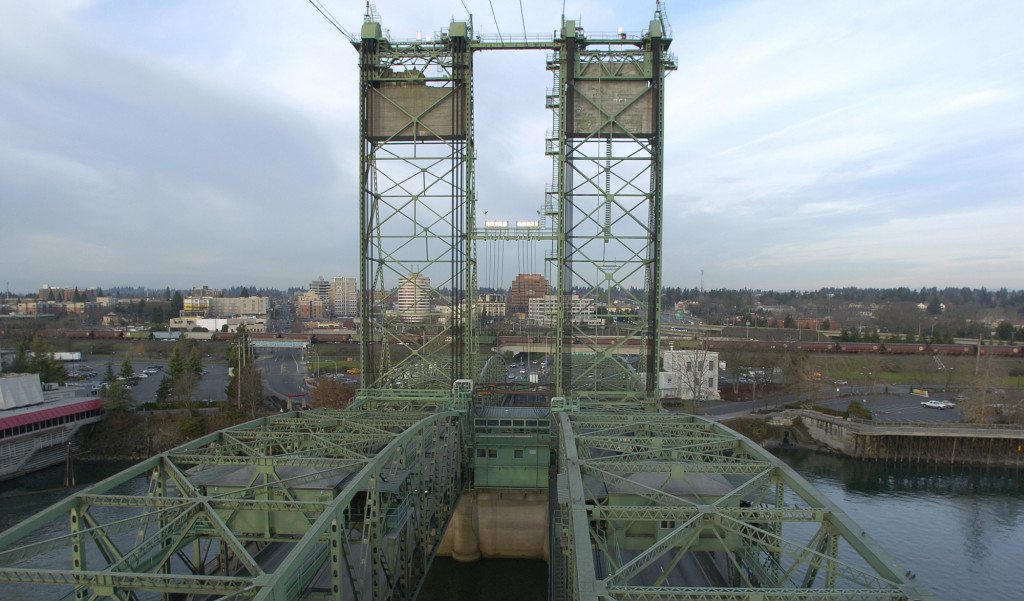Less than a year from now, the Interstate Bridge Replacement Program office hopes to have settled on a single preferred configuration for a new Interstate 5 Bridge over the Columbia River — one that would answer all of the big design questions, such as how many lanes the bridge would have and what kind of high-capacity transit it would carry.
That’s according to the timeline that program administrator Greg Johnson laid out at Tuesday’s meeting of the project’s Executive Steering Committee, which is composed of representatives from local governments such as Vancouver, Portland and Metro and regional agencies including C-Tran and TriMet.
Climate goals
A significant portion of the meeting was devoted to climate issues. The program’s principal climate officer, Sarah Ogier, gave a presentation on the development of the project’s climate framework and the type of feedback the office has received from public outreach efforts so far.
Feedback across all of the program’s advisory groups and public outreach efforts showed widespread support for making climate change a priority for the project, she said, adding that climate problems with the current bridge include limited capacity for biking and walking and constraints on public transit.
“All of these are conditions we believe we can change and improve with our new design,” she said.
The climate framework will center on two categories, she said: minimizing climate impacts and addressing climate resiliency. The impacts portion will play into evaluating transportation options, project construction, bridge maintenance and operations and offset opportunities for unavoidable emissions.
The resiliency portion will focus on making sure the bridge is prepared for changing environmental conditions such as higher-intensity storms and rising river levels as well as the impacts of climate change on people such as geographic population shifts due to climate change or behavioral changes like early morning commutes during cooler hours.
The office’s goal is to have the program’s Community Advisory Group and Equity Advisory Group review the draft climate framework in August and then spend September through December working with partner agencies to finalize the framework and use it to develop screening criteria and performance measures to evaluate bridge design options.
Several committee members expressed a desire to make the climate a high priority in the development process. Metro Council President Lynn Peterson said the recent record-breaking Pacific Northwest heat wave brought the climate change issue to the fore, and she and Portland City Commissioner Jo Ann Hardesty both stressed that the project would need to focus on reducing carbon emissions.
“Minimizing (emissions) isn’t good enough,” Peterson said. “Severely reducing is how this project is going to have to think about it.”
Development timeline
In the second half of the meeting, Deputy Program Administrator Frank Green and Environmental Manager Chris Regan gave an overview of the project’s development timeline, which is built around a goal of starting construction in 2025.
The next few months will focus on defining the screening criteria, obtaining data for screening and developing design and transit options. Screening of the design and transit options is scheduled for November and December, and development of a draft Interstate Bridge Replacement solution is scheduled for January and the first half of February.
The goal is to submit the single preferred alternative for National Environmental Policy Act re-evaluation in May 2022. The project is aiming to build on the original Columbia River Crossing’s environmental process so that it will only need a Supplemental Environmental Impact Statement rather than a full EIS.
The office’s tentative timeline shows the environmental process continuing through the end of 2023, then moving into the pre-construction phase for 2024 and the first half of 2025, leading up to the start of construction midway through the year.




